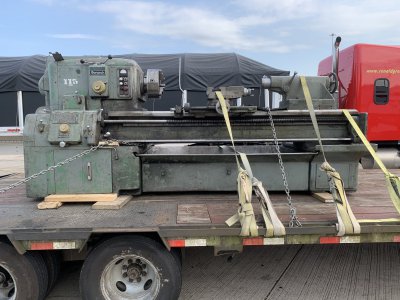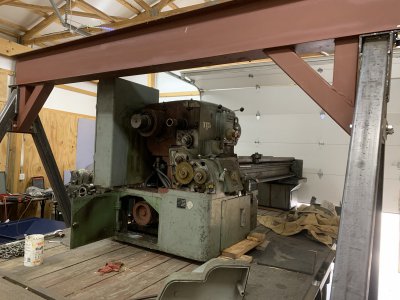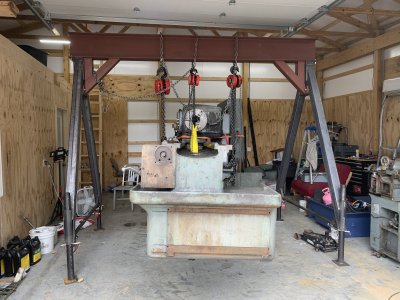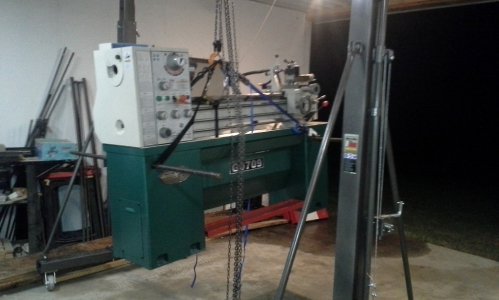Hello all - I will be getting a 14x40 Lathe in the very near future and I seem to be stuck on how to actually get the lathe off of the pallet it will be on.
Used 3 1/2" deck screws to assemble it.
I could lift an entire tractor that weighed most of a couple tons.
Was poor at the time so kept the lumber clean.
After finishing the task I disassembled the gantry and returned the lumber to Home Depot.
You are lucky. Very lucky. Deck screws should never be used in a shear application.
@Ultradog MN what you suggest is not really for a beginner, and while wood is very, very strong, it is easy to make mistakes as a beginner.
@7milesup you are technically right, and GRK fasteners are at least rated for shear, but perhaps the argument is detracting from the original question: "How do I do X?"
----
@jareese I shipped a 3800 lb milling machine. The shipper had found the original pallet was defective (rotting, crumbling) - so he lifted up the entire affair onto a sturdy pallet and banded it all together. So my mill was teetery and up 8" off the concrete floor. Not to mention that Mills are very top heavy.
This is a similar situation to what you have, but with higher risk. I solved it, but I have 20 years experience of moving machines 2000lbs+ all by myself.
You haven't described your specific situation, but I will assume it is in a garage. You cannot put any side loads or large downward loads on your ceiling trusses in a garage. So you have to do it from the 'ground up'...
First you need to assess your risks. Lathes are top heavy, and will fall forward and backward very easily. Everything you do should avoid this problem. You need to safely take the weight off the pallet.
Your safest method is to lift it using a gantry crane, from the lathe bed, very near the headstock. In most large cities you can rent a gantry crane with a chain hoist.
Do not use a lifting strap wrapped around the lathe bed - if you wrap it with the lead screw in the loop, your lathe will be seriously damaged. How to use a strap is to wrap it in the web so that it goes in the holes between headstock and tailstock - NOT across the ways. The strap for a 2000lb lathe must be rated at 8000lbs lifting capacity. For lifting, a 4:1 safety margin is good practice.
Heavy duty engine hosts can be rented also, but you will find it difficult to position the legs to make the lift possible. An experienced rigger can do it, but it is hard for a 'first-timer'.
You can also block it up using steel bars and wooden blocking, but that is another advanced technique. There are a dozen other ways to do this, but the gantry crane is going to be the easiest and safest. If you are at all in doubt - get a rigger or an experienced volunteer. You can get killed if you screw up.
If I were closer, I'd show up and it'd be done in about 2 hours.






